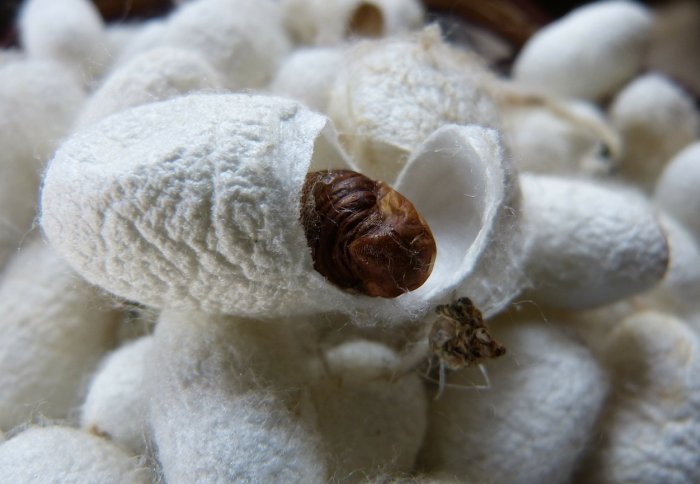Graphene and silk show potential as armour of the future

A team of Imperial alumni and postdocs are combining silk with graphene to produce next generation armour for people, vehicles and buildings.
“If you were shot by a handgun, Kevlar body armour will save you.” said Dr Gareth Tear, postgraduate researcher in shock physics, and one of the leads on the project. “But the armour required to stop high-calibre rifle rounds and shrapnel requires an outer layer of ceramic, which makes the vest much heavier, hampering movement.”
During the recent war in Iraq, it was reported that the ceramic plates were so unwieldy that British troops actually preferred to remove them in a firefight, further endangering their lives.
This problem inspired Gareth and two colleagues, Dr Gianmaria Bullegas and Dr Jose Videira, to look at fresh ideas for materials that could significantly reduce the weight of body armour. After some investigation, they hypothesised that combining silk with graphene - often called a ‘super material’ for its incredible properties - might be a solution.
A modern twist
The team figured that by improving on the Kevlar layer, then they could reduce the size of the ceramic outer layer, making the vest much more wearable.
They initially looked at spider silk as it is known to be 10 times tougher than Kevlar. However, spiders are cannibalistic and can’t be farmed. Their silk can be produced in yeast that are genetically engineered to host the silk gene, but this is very expensive.
Instead, they turned to silk from silkworms, produced for thousands of years through sericulture. But whilst this is much easier to produce, it is not as tough as spider silk. To improve this, they added a modern twist – graphene.
The team decided to set up a company - Synbiosys - to explore this idea further, and received project funding from The Defence Science and Security Accelerator (DASA).
Making films
The project has so far focused on successfully combining the two materials into a composite, something that hasn’t fully been addressed before. “Incorporating carbon nanostructures, like graphene, into silk has been attempted before, but not effectively.” explained Jose. “One research group tried spraying carbon nanotubes onto mulberry leaves, before feeding them to silkworms, and another research group sprayed graphene flakes directly onto spiders.”
The Imperial College team instead focused on applying the graphene to the silk, rather than the animal, and showed this technique can be used to make thin, composite films.
They then tested the film by shooting it with tiny pieces of metal, using a special laboratory device, and measuring the effect of the impact.
The tests showed that adding the graphene increased the strength of the composite - the amount of force required to stretch the material - compared to the silk on its own. Strength is important as stronger materials will stop faster bullets, and this test validated their idea of graphene increasing the strength of silk. “It’s a good start, and we are already seeing improvements on our original designs.” said Gianmaria.
Several application areas
The silk-graphene composite is transparent and lightweight, properties that make the material suitable for applications beyond body armour. The team are working to expand on this, and have already seen interest from manufacturers of bullet-resistant glass.
Other areas they think their material will be useful include space, where lightweight materials are needed to protect against fast-moving debris, and medicine, where another characteristics of silk, biocompatibility, is advantageous.
The team are now focusing on refining their prototypes and applying for patents, and expect exciting things for 2018. Synbiosys recently pitched at the Pitch@Palace On Tour event in London and was one of the three startups selected to go automatically through to the second stage Boot Camp. This culminates in a pitch to influential innovators and investors at St. James’s Palace later in the year. We wish them the best of luck!
Article supporters
Article text (excluding photos or graphics) © Imperial College London.
Photos and graphics subject to third party copyright used with permission or © Imperial College London.
Reporter
Max Swinscow-Hall
Institute for Security Science & Technology